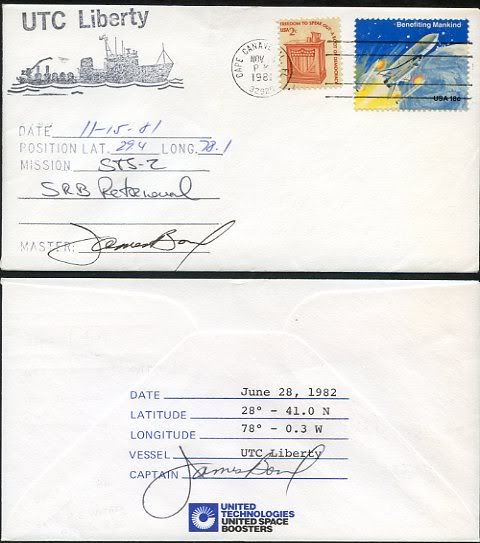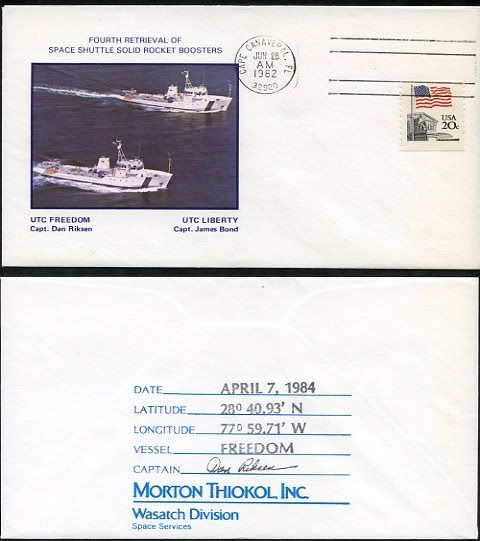Space Cover #37, Solid Rocket Booster Retrieval Ship CoversHighlighted this week are covers from SRB Retrieval Ships UTC Freedom and UTC Liberty. These two ships have been used since STS-1 to recover the two spent Solid Rocket Boosters (SRB's) used on every Space Shuttle launch.
Two minutes after launch, the two 149 foot tall SRB's lose thrust after exhausting their fuel. After separating from the Shuttle's External Tank at about 30 miles altitude, they continue to coast up to an altitude of about 45 miles before beginning their long tumble back to earth. After parachute deployment, the two SRB's splash down about 160 miles downrange. After splashdown, both SRB Retrieval Ships Freedom and Liberty depart for the recovery area.
After each ship locates and secures one spent SRB, the two SRB's are towed back to Cape Canaveral Air Force Station for disassembly and refurbishment.
Shown above are the front of two SRB Retrieval Ship covers and the back of two others. The top cover is from the UTC Liberty for STS-2, with the ship's rubber stamp cachet applied and signed by Capt. James Bond. The second cover down is the back of an STS-4 Liberty cover with printed information and also signed by Capt. Bond. The third cover down is the front of an STS-4 cover with a printed cachet showing both SRB Retrieval Ships. The bottom cover is for STS-41C, with a printed cachet giving retrieval information.
These covers should give collectors a basic idea of typical cachets used on these covers, both front and back.
It has been reported that, at least early on, these SRB Retrieval Ship covers were actually on board the ships during retrieval opertations, although no such documentation is included. And unknown to me is the quantity of covers serviced by each ship for each mission and also how many flights covers were provided to collectors. The last Liberty/Freedom covers I know of were done for STS-41G, Shuttle flight 13.
The covers were serviced for free, but greedy individuals ruined that by sending in excessive numbers for each mission and the service was greatly curtailed or possibly ended prematurely.
More information about these interesting covers would be appreciated and would be reported here.













